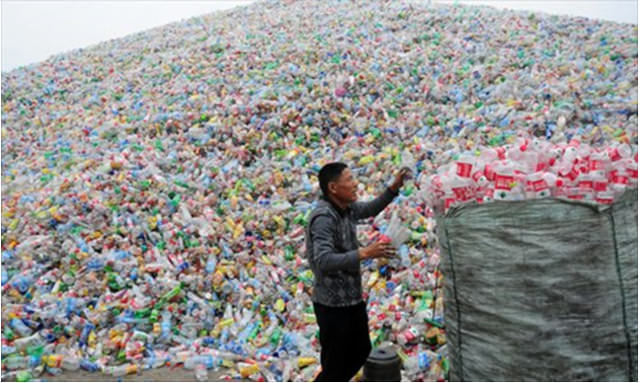A hopeful future: new Enzyme Breaks down plastic bottles
Is this the end of plastic pollution?
Scientists found and "upgraded" a bacterial enzyme that can break down plastic bottles into their original components.
The enzyme was first found in composting leaves which is where it got its name from: leaf-branch compost cutinase (LLC).
Plastic water bottles are made of polyethylene terephthalate (PET). LLC breaks the bond between PET's two building blocks, terephthalate and ethylene glycol. The original enzyme was very slow in doing so and could not survive the high temperatures needed to soften plastic and make it moldable (the more soft the plastic the easier it is for the enzyme to work).
So scientists re-engineered the enzyme to work faster and at high temperatures. The new, mutant enzyme is 10,000 times more efficient than the original and can work at around 72 degrees (the temperature at which plastic starts to soften).
It is able to break down one tonne of PET in under 10 hours.
A breakthrough in the fight against plastic pollution
The discovery is groundbreaking because polyethylene terephthalate (PET) is the most widely used plastic. 70 million tonnes of it are produced every year!
60 million PET water bottles are used and dumped every day. And since only 20% of all plastic bottles are actually recyled, about 40 billion bottles end up in landfill or get incinerated every year.
In addition, those plastic bottles that are recycled can only be downcycled into less valuable objects. This means, a water bottle cannot be made into a water bottle again but has to be recycled into a less valuable object like a carpet. These low quality products can usually not be recycled another time and are sent to landfills.
The life cycle of a plastic product is very limited.
LLC breaks down 90% of a plastic bottle into its original prestine components. There is no loss of quality, so these components can be used to make new, food-grade plastic bottles. Think about it. No plastic bottle has to be sent to landfill anymore. Are we finally on our way to a circular economy with regards to plastic bottles?
Surprisingly, the company behind the breakthrough, Carbios, partnered up with big environmental polluters like Nestlé or PepsiCo.
The first factory is planned to start large-scale production in 2024 or 2025.
Even better news: the cost of the enzyme is just 4% of the cost of virgin plastic made from oil. The enzyme needs help, though. The bottles have to be ground up and heated to 72 degrees celsius before the enzyme can be added, which makes the recycled plastic more expensive than new plastic. I hope beverage companies see the value of it and decide to pay a bit more.
A hopeful future?
Unfortunatley, this enzyme can only break down PET plastic bottles, but scientists are working full time on solving the plastic pollution crisis. In 2018, German researchers found a bug that eats toxic polyurethane, and the wax moth larvae were discovered to eat polyethylene bags.
I'm beginning to be optimistic about a future without plastic pollution.
Resources















